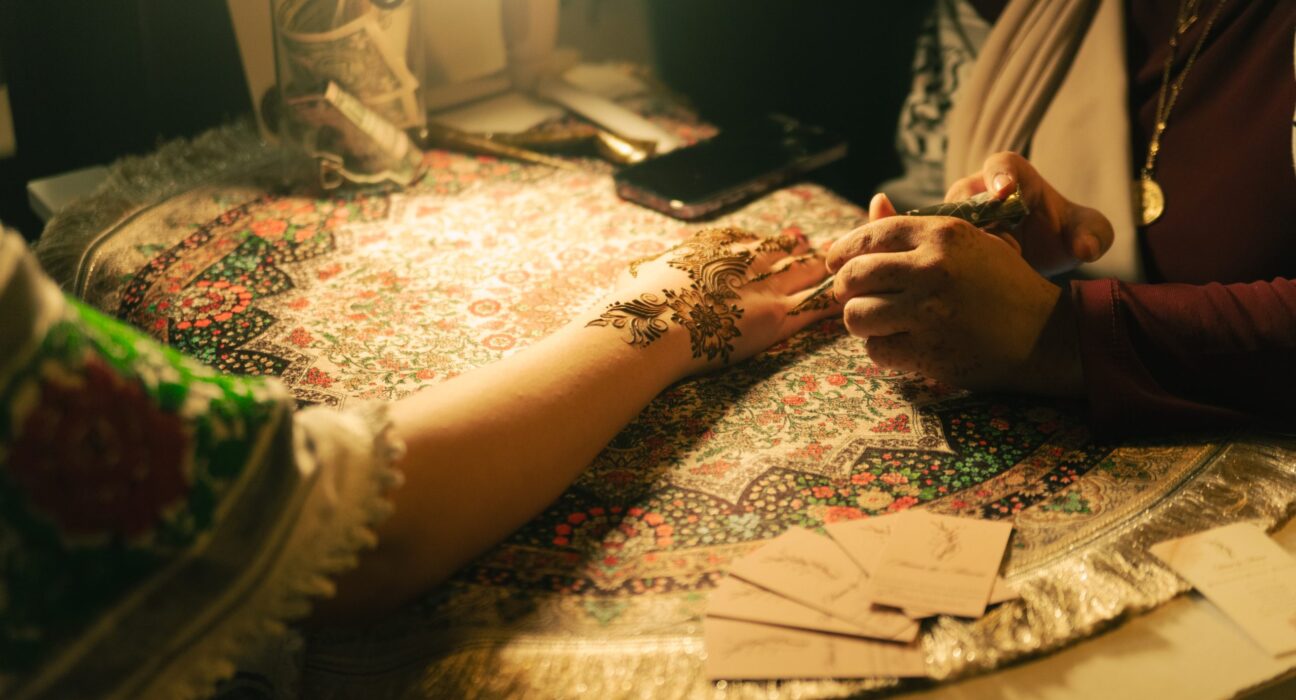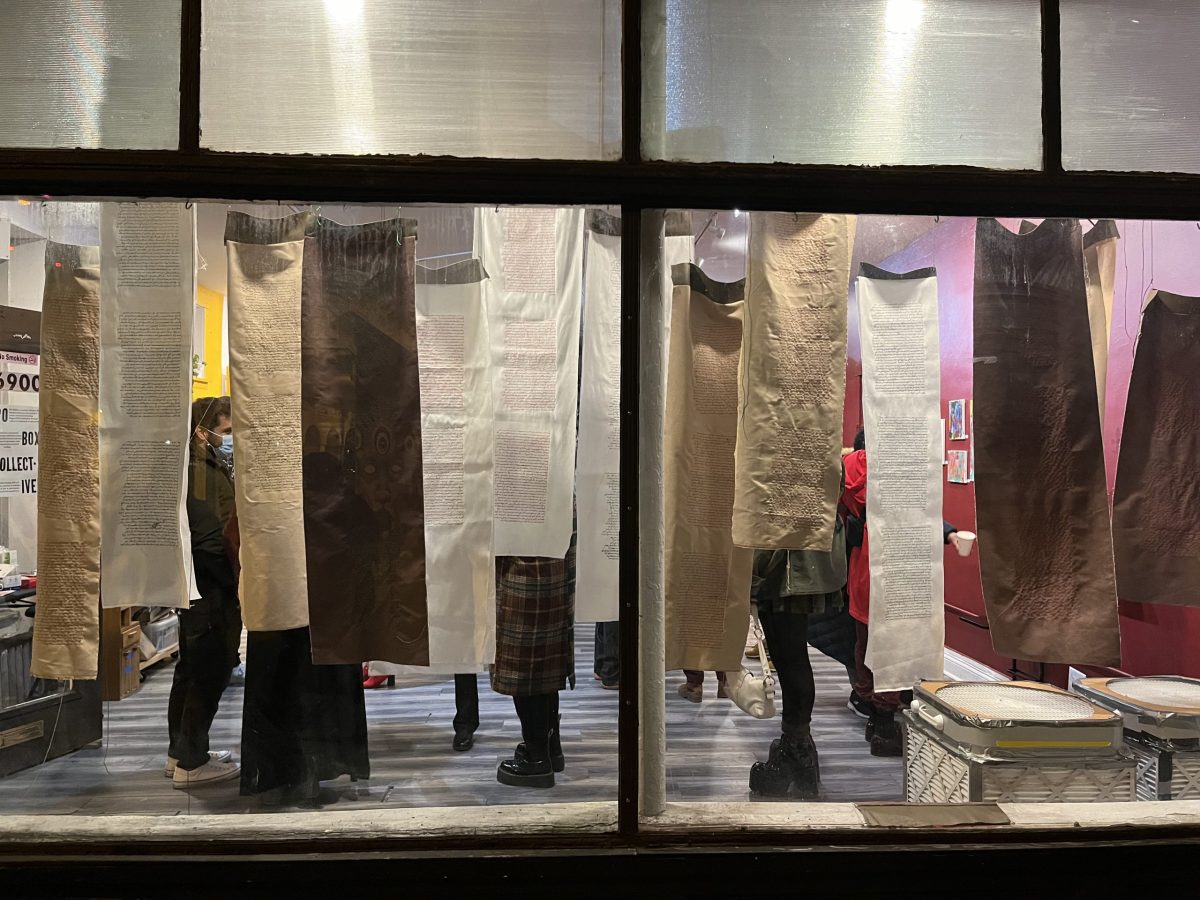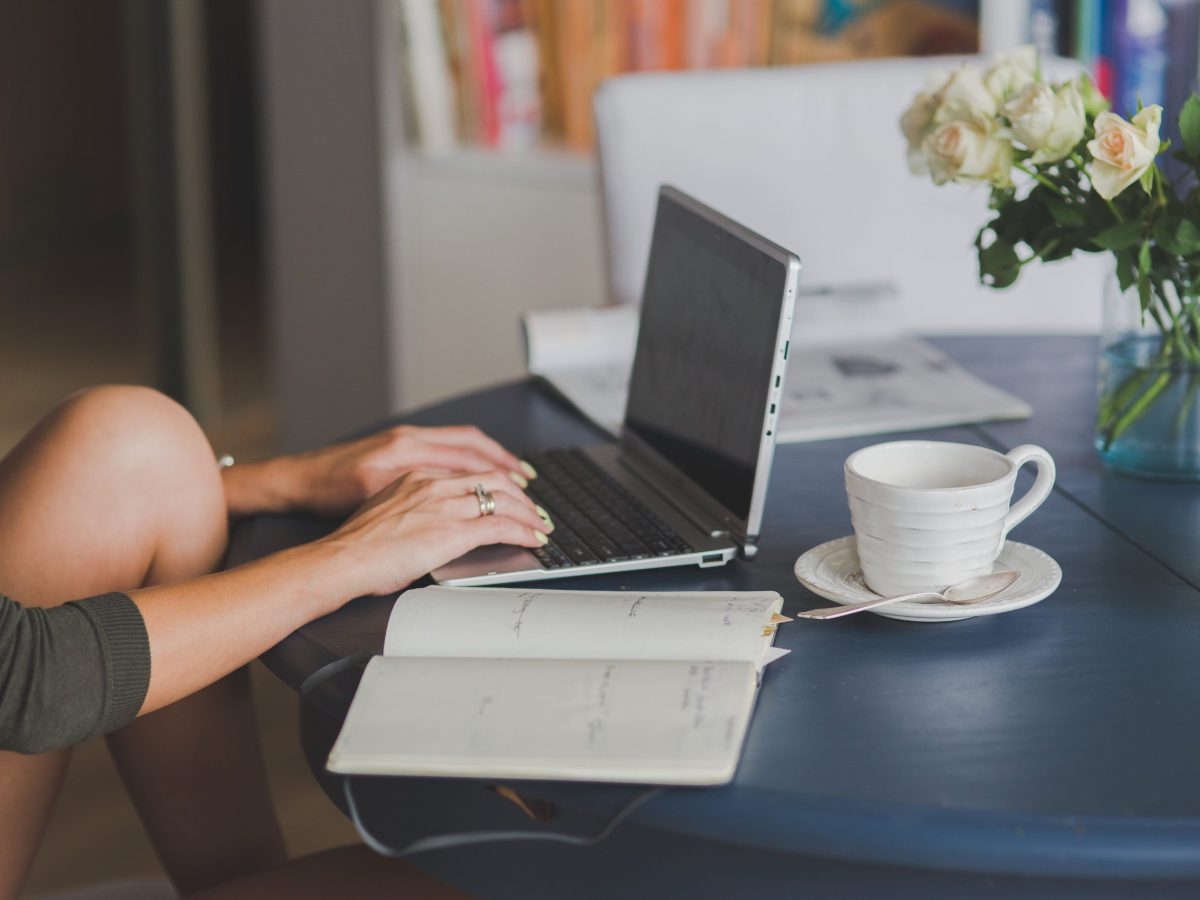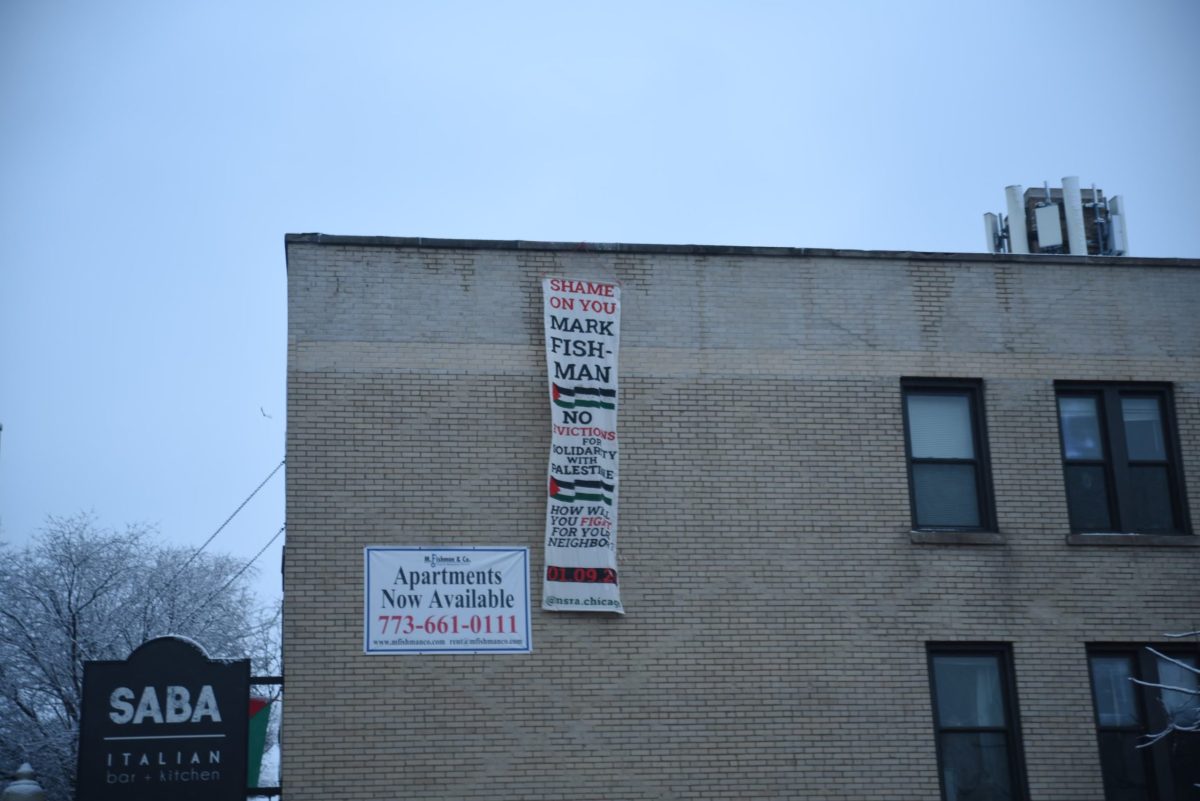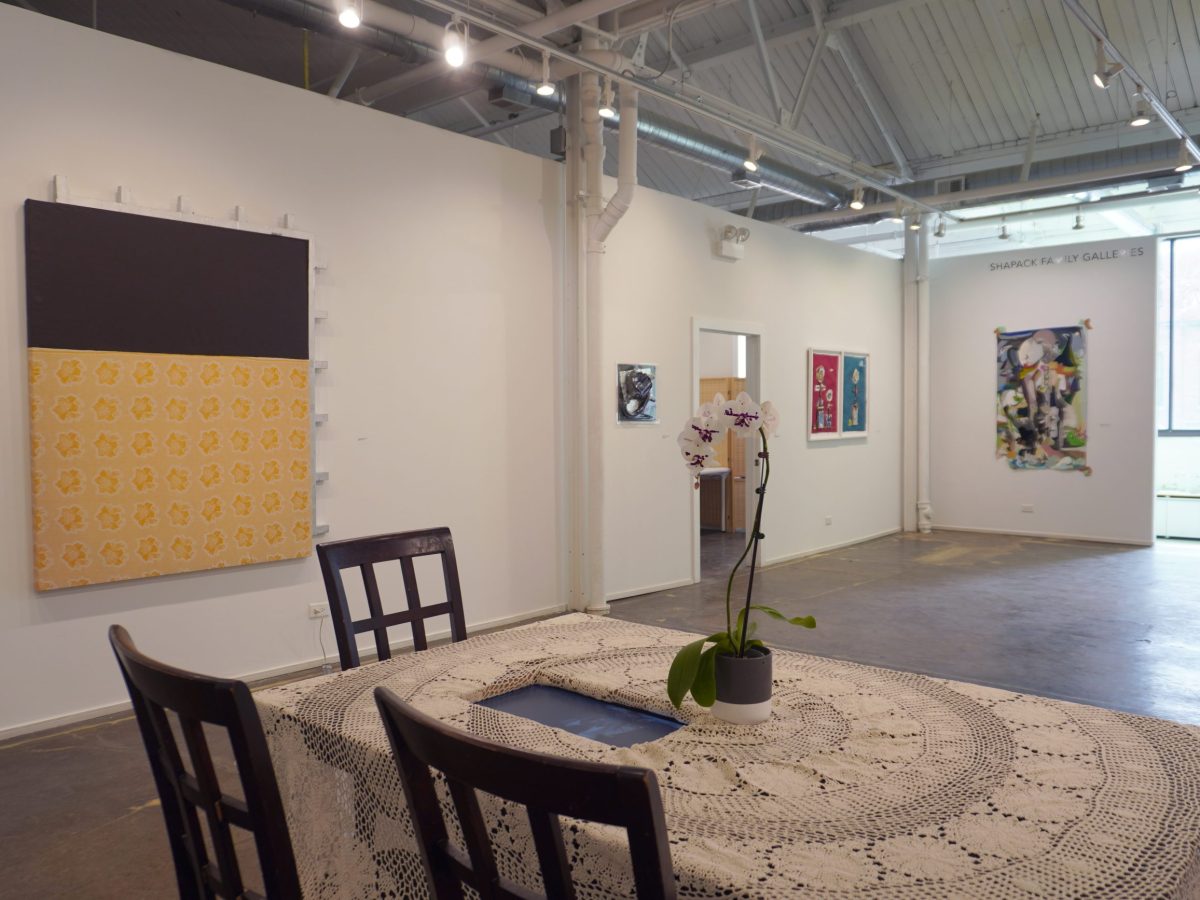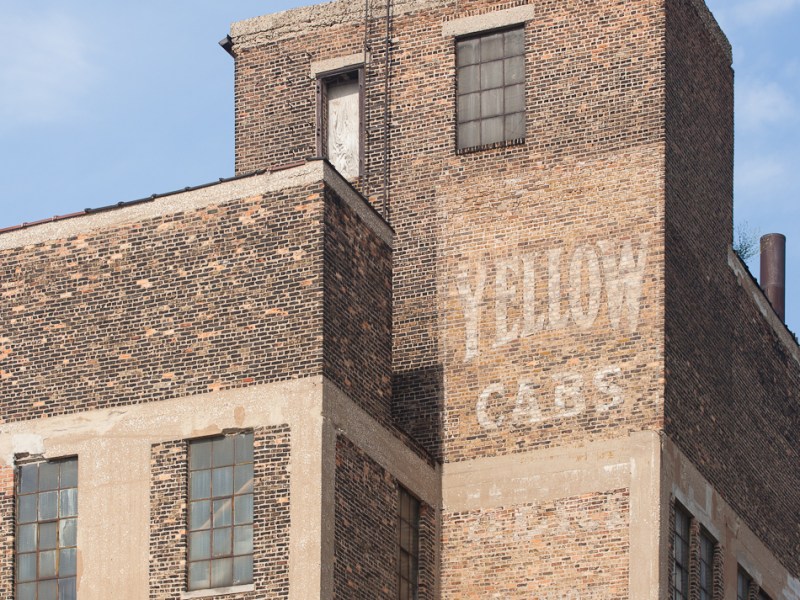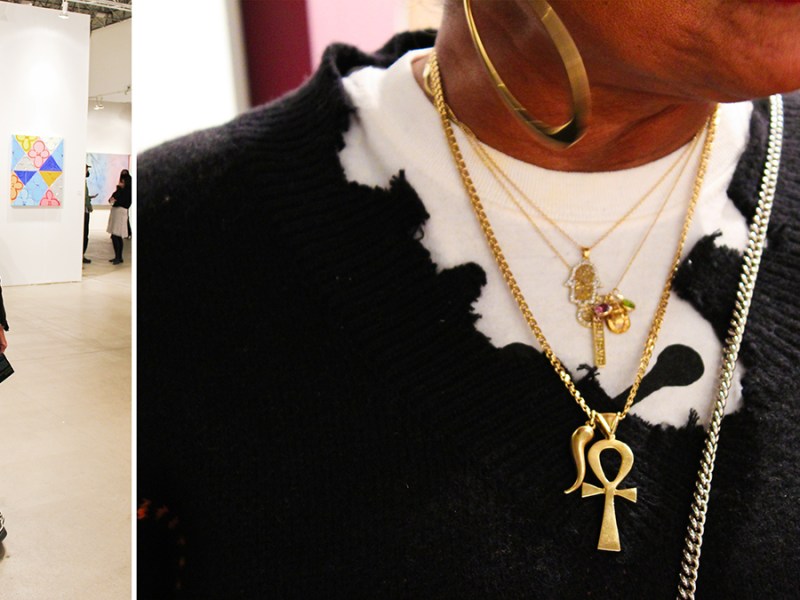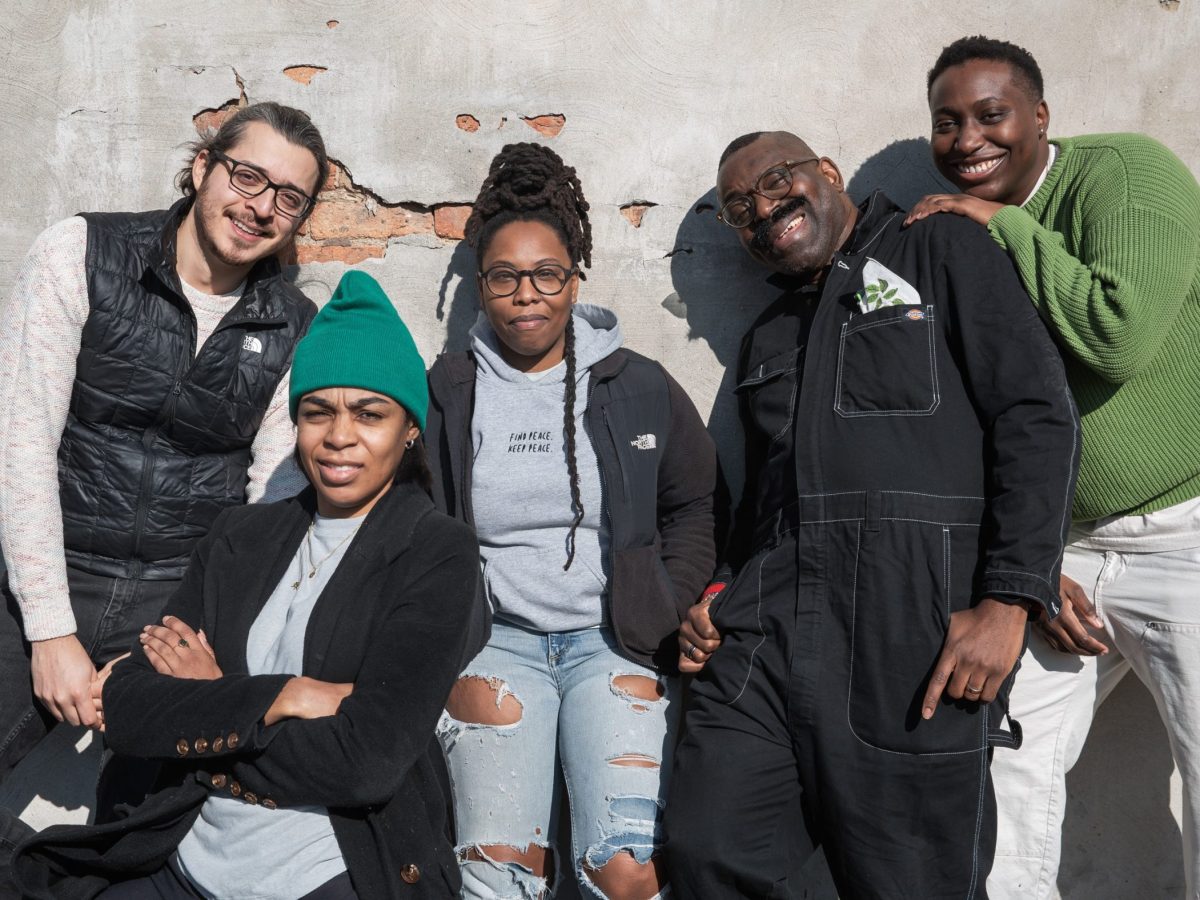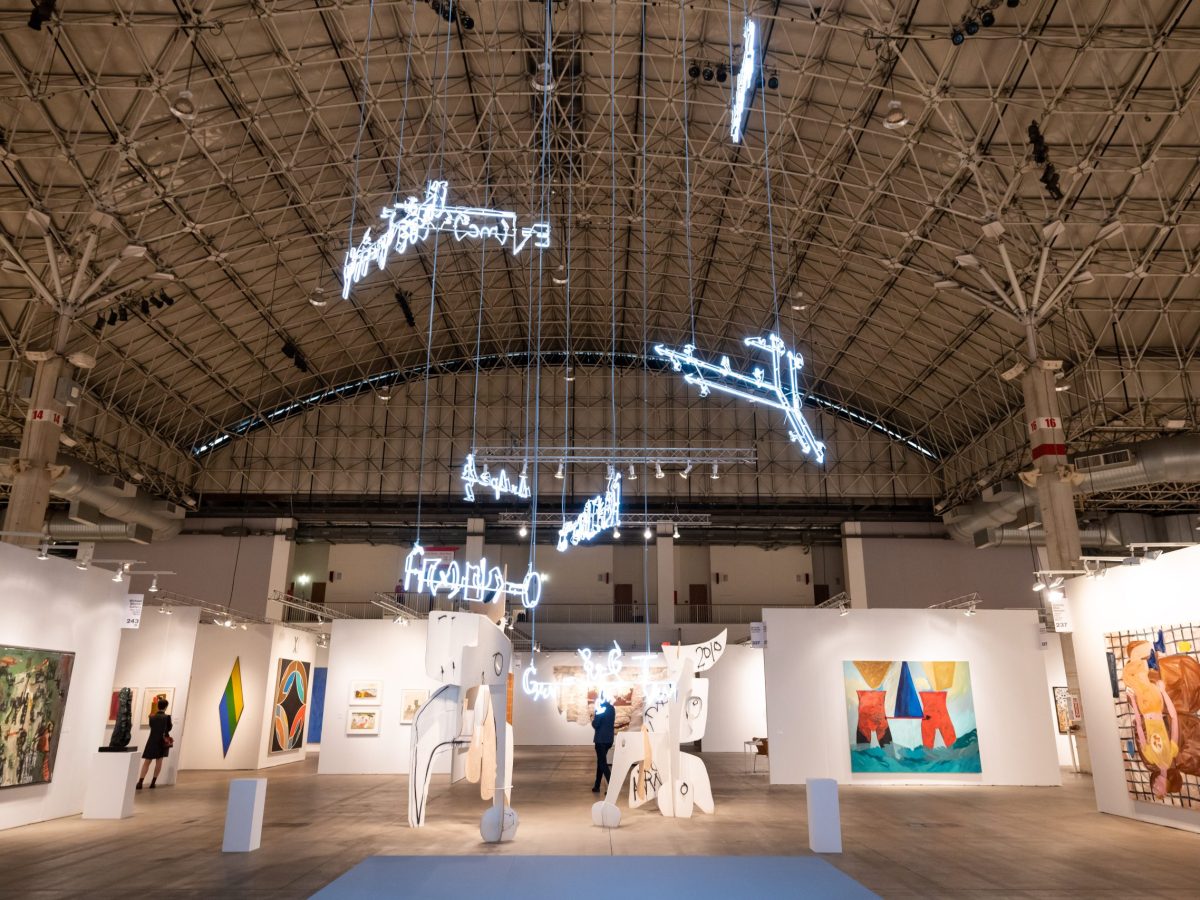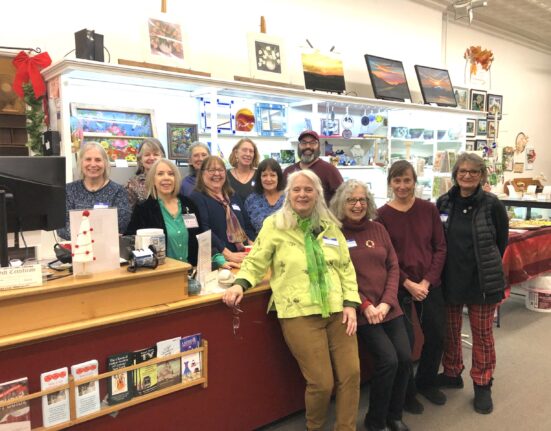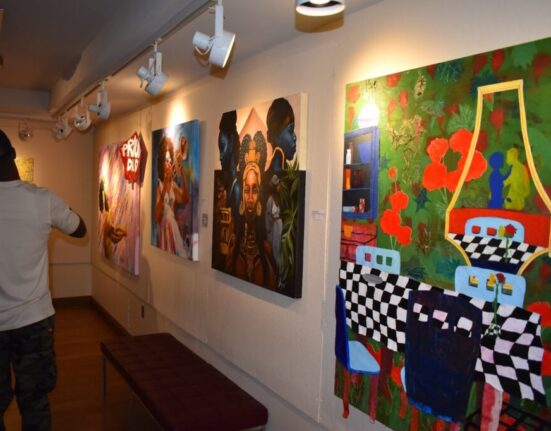A cross between an art market, block party, and political rally, Artists Against Apartheid brings together Palestinian and Arab artists from around Chicago to recharge, build community, and raise funds for those in occupied Palestine.
Artists Against Apartheid
Sun 4/21 2-8 PM, Alhambra Palace Chicago, 1240 W. Randolph, $5-10 suggested donation
instagram.com/falasteen.favorites
“This is a time for us to de-stress within community and celebrate Arab culture in a way that we don’t often see represented,” says Saja Bilasan, cocreator of Chicago’s Artists Against Apartheid art markets.
The market is raising funds to assist Palestinian families fleeing violence and for the nonprofit SkateQilya, an organization promoting health and wellness for Palestinian youth via skateboarding. AAA will hold their third art market on April 21, at Alhambra Palace Chicago, 1240 W. Randolph.
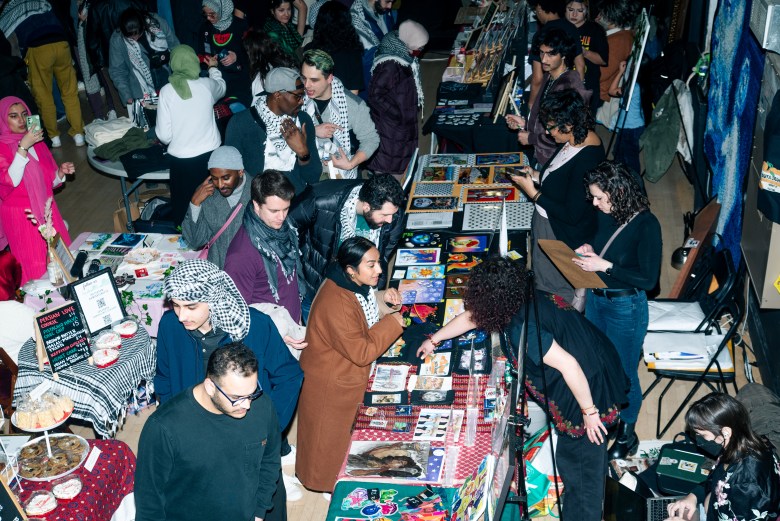
Credit: Gracie Hammond
The AAA market began as a conversation between Bilasan, a Palestinian artist and organizer, and friend and fellow organizer alithia zamantakis, about how they could raise funds for aid to Palestine.
Since its start, the market has entered a wider network of cultural workers supporting Palestinian liberation organizing under the “Artists Against Apartheid” label. The group borrows its name from Artists United Against Apartheid, a collective of U.S.-based musicians formed in 1985 to protest South African apartheid.
Bilasan and zamantakis held their first market in December at the Chicago Liberation Center, headquarters for Chicago’s Party for Socialism and Liberation, where zamantakis is an organizer. “We had about 150 attendees,” said Bilasan. The second, held at the headquarters of community wellness organization Healthy Hood Chi drew a crowd of over 400. “We had a wait-list going, it was amazing.”
The growth of the market has also meant a growth in the organizational lift required to pull off an event of this size. For their upcoming market, Bilasan and zamantakis are collaborating with Al-Hub Chicago, a new organizing collective aimed at creating a hub for Arab cultural programming in the city. The market is also partnering with Chicago’s PSL and Latinos for Palestine; the latter has been developing programming for Chicago’s Latine community to bring them closer to the cause of Palestinian liberation.
The Artists Against Apartheid events are as much about building a sense of Arab and Palestinian community in Chicago as they are about raising funds and resources, says Bilasan. Bilasan is also a registered therapist and cofacilitates the Chicago Support Group for Palestine, a community space for those feeling the acute emotional effects of the ongoing genocide.
Much of Bilasan’s family is still in the West Bank and the region known as the “48 lines,” an area of occupied Palestine created following the 1948 Nakba, an event where Zionists forcibly expelled over 700,000 Palestinians from their homes. Bilasan grew up in Milwaukee before moving to Ramallah, Palestine at age 15, and as a Chicago transplant, she says it has been difficult to find Palestinian community within the city. According to Bilasan, events like the AAA market and her Palestine support group have been a great way for her and fellow Arabs in Chicago to build community.
The AAA market features music and Arab cultural arts, like henna, calligraphy, and tatreez, a form of traditional Palestinian embroidery. Bilasan describes the market’s energy as “immaculate.” “I think ‘joy as resistance’ truly embodies not just this event, but Palestinians and their willpower, and their steadfastness . . . we’ve held on to our roots.”
This idea of “joy as resistance” has been bandied about in movement spaces for years, almost to the point of platitude says DJ Nanoos, a Palestinian and Armenian DJ who has been spinning her signature blend of diasporic Arab and Detroit house at the AAA markets since the first event in December. “It is very important that you’re specific as to what resistance we are talking about. Us dancing and enjoying ourselves, it’s resistance, but it’s not the same resistance as people just trying to live another day.”
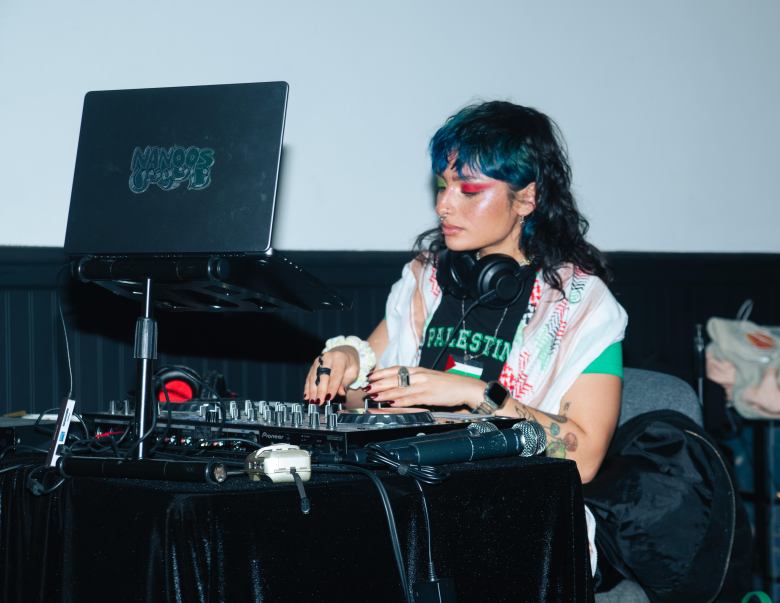
Credit: Gracie Hammond
The joy of the AAA markets is cast against the backdrop of great suffering for many in occupied Palestine. Since the events of October 7, the Israeli government has lead a merciless military campaign, killing over 30,000 Palestinians according to Gaza’s health ministry (the actual death toll is predicted to be much higher) in what many are deeming a genocide. This juxtaposition of joy and turmoil has left many Palestinians in the diaspora with difficult questions about the role of events like this one in the larger movement for Palestine.
“It’s very uncomfortable for me to actually have to do this,” says Nanoos. “When you see me smiling and dancing, I am having a good time and I am feeling reaffirmed in my identity with my community through music. But on the same token, I’m like wildly disturbed.”
While this cognitive dissonance can be difficult to hold—Nanoos’s full thoughts on the issue can be found in a video essay on their Instagram—they still believe events like AAA are important for emotional release: “After a long week of organizing, we still deserve to hold our bodies in a way that feels cathartic and feels like a reset.”
Resistance comes in fighting a culture that demands constant labor, and for Nanoos, this means creating a space in opposition to Chicago’s racist nightlife scene. Along with DJing the markets, Nanoos is also one half of Go Baba! Worldwide, a pro-liberation dance collective making space for underrepresented voices in Chicago nightlife.
Artist and AAA market vendor Shazhaad Raja agrees that events like this one serve an important purpose in movement organizing: “Right now is a difficult time for a lot of people with the backdrop of the genocide happening. . . . Knowing that everyone is at the market for one purpose, to support the cause, and knowing they want to give back to Palestine, you can just feel the energy.”
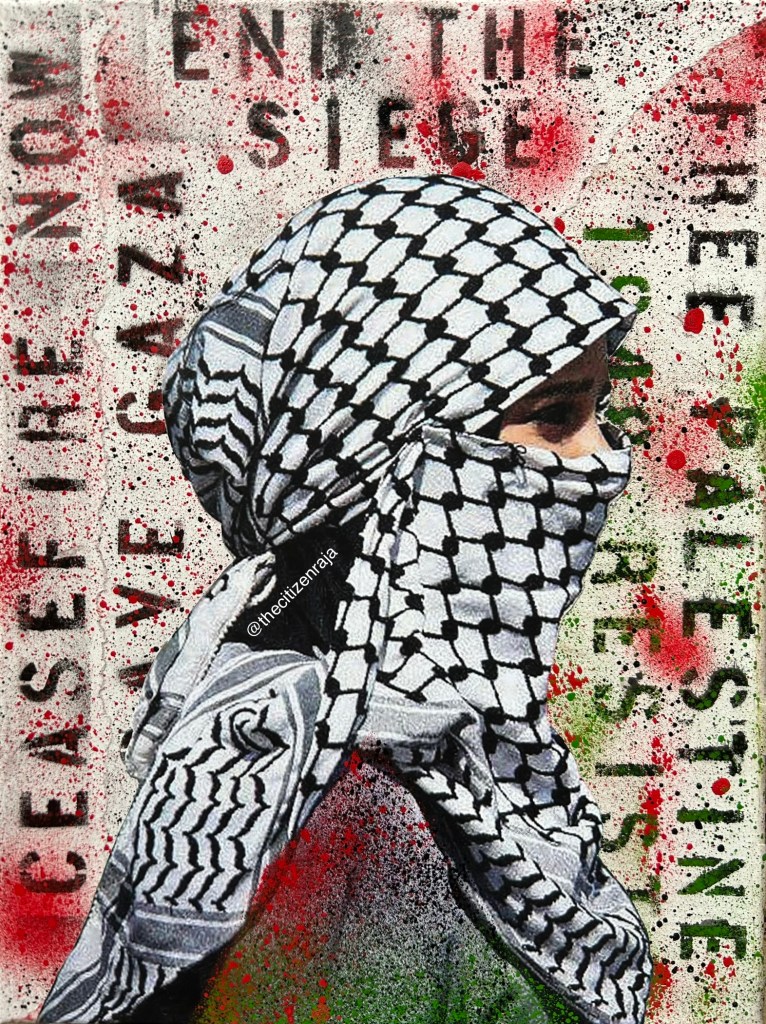
Courtesy the artist
Raja, who also goes by the artist moniker Citizen Raja, joined the AAA team for their second market in February. Raja uses collage to touch on major political issues and since October has shifted to focus largely on Palestinian liberation. One hundred percent of the profits from his online store benefit the Palestine Children’s Relief Fund, a nonprofit providing medical assistance to children in Palestine.
Raja believes that art is an important tool for building political power, especially amidst the attention economy of social media. In an effort to drum up some offline visibility for Palestinian liberation, Raja has taken his art to the streets, wheatpasting posters across Wicker Park, Logan Square, and other parts of the northwest side.
The power of the Artists Against Apartheid markets, says Raja, is in their ability to turn online concerned folks into an IRL community of focused organizers. “I think people get confused or overwhelmed on what they can do,” said Raja. “It’s not like one person is going to be able to fix the issue. . . . Whether it’s protesting, donating, boycotting, educating, creating art, everyone has something that they can do. Imagine if everyone in the world did something to contribute, how much better of a place we’d be in?”
related stories
At PO Box, a group show centers the ties that bind global communities
On a corner in Rogers Park stands a former United States Postal Service office with banners of tan and white suede unfurling behind its storefront window. From the sidewalk peering in, one can make out black- and red-stitched Arabic script running across the “pages”—they record the names of 6,000 Palestinians killed (a partial list) by…
‘Healing happens in community’: Therapist makes space for grief, solidarity amid Israel-Hamas war
Nearly 100 queer people of Middle Eastern heritage are gathering each week for an online peer support group in response to Israel’s attacks on Palestinians. Led by Finlay Sarafa McHale, a queer and transgender Iraqi Chaldean clinical social worker, the online group of queer SWANA (Southwest Asian and North African) people aims to provide a…
No evictions—or movie tickets—for solidarity with Palestine
An autonomous collective announced a mass boycott of the Logan Theatre after its owner, Mark Fishman, began eviction proceedings against residential tenant Manal Farhan for violating lease regulations by flying the Palestinian flag outside of her apartment window.

